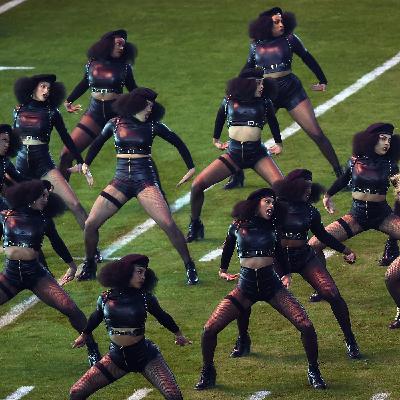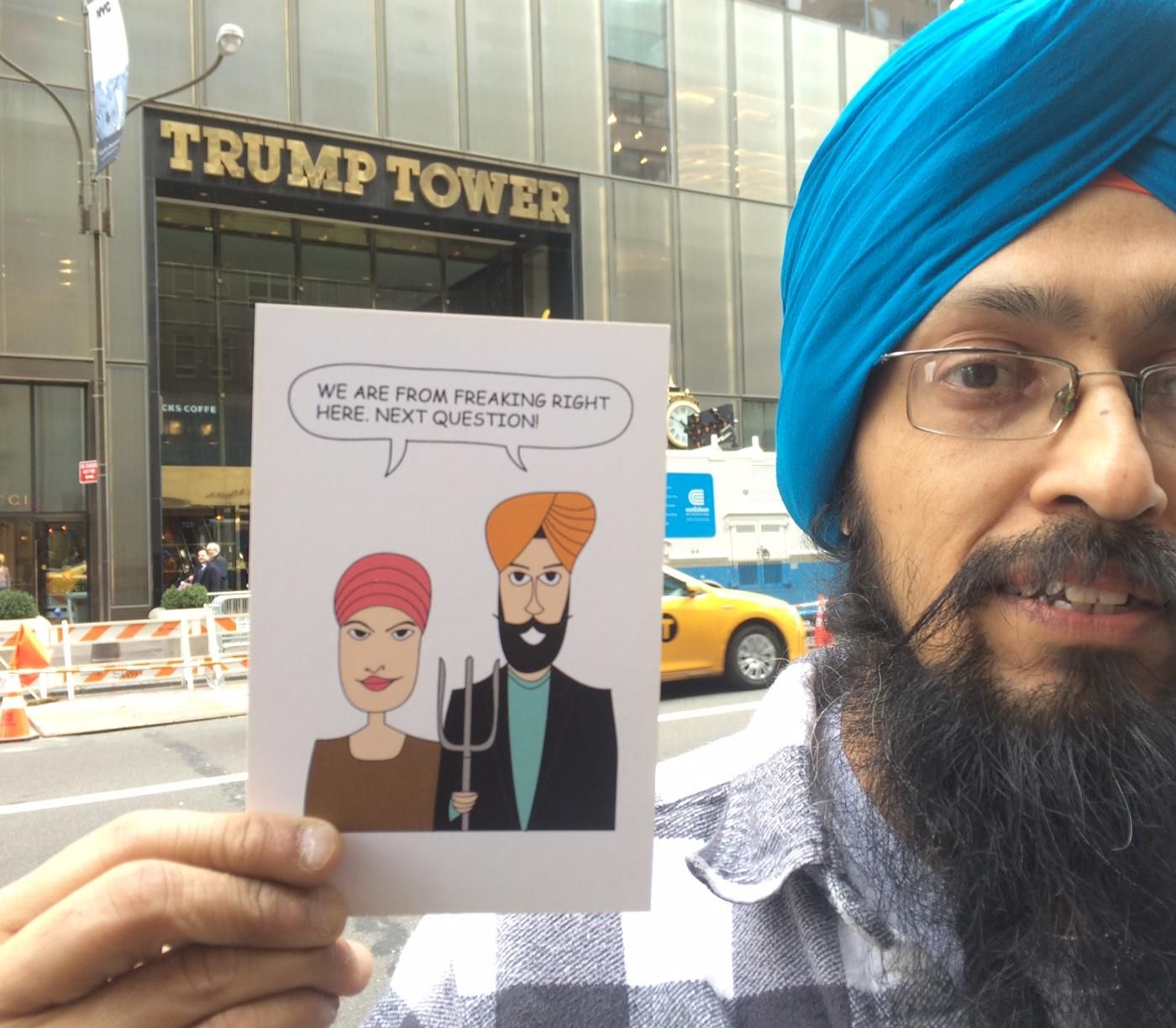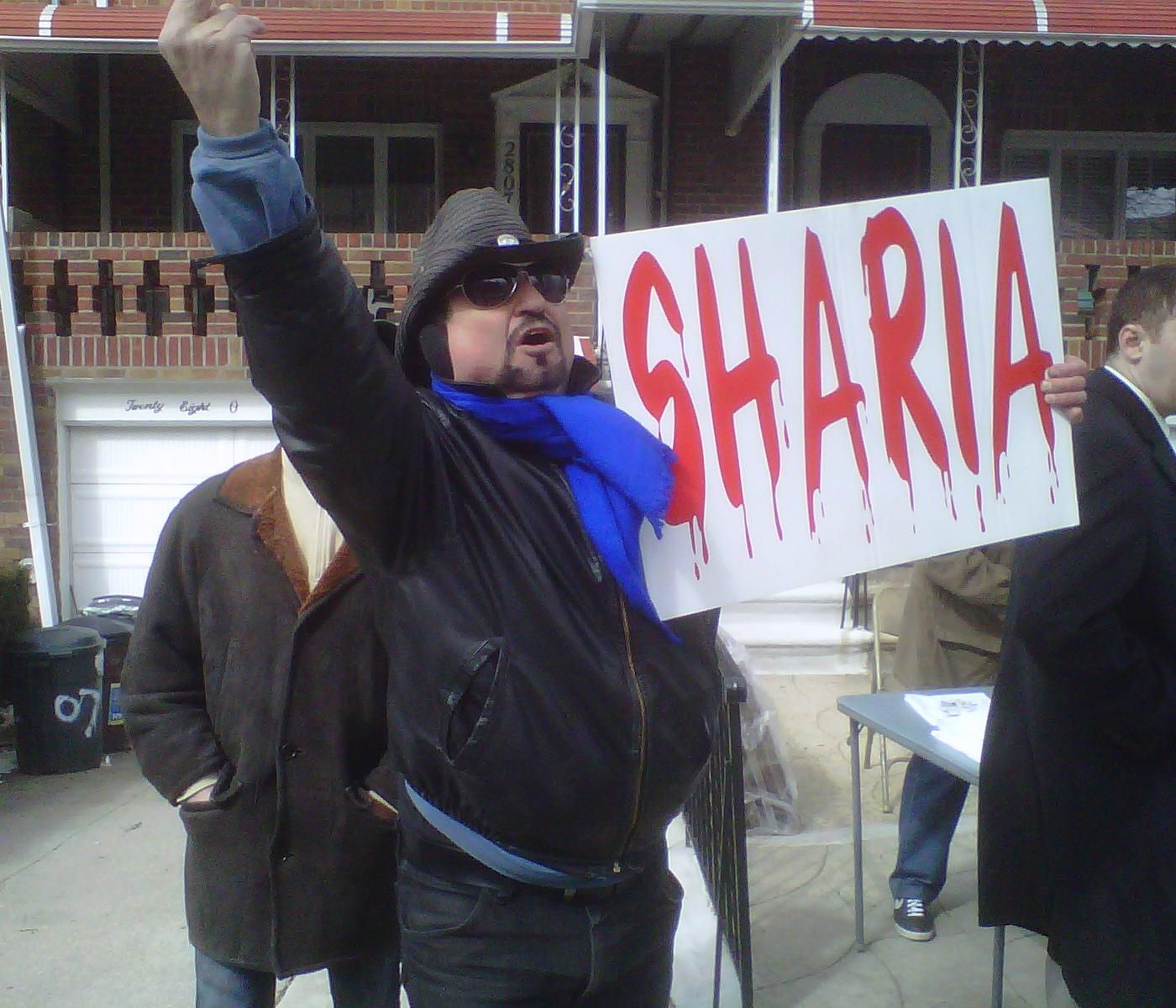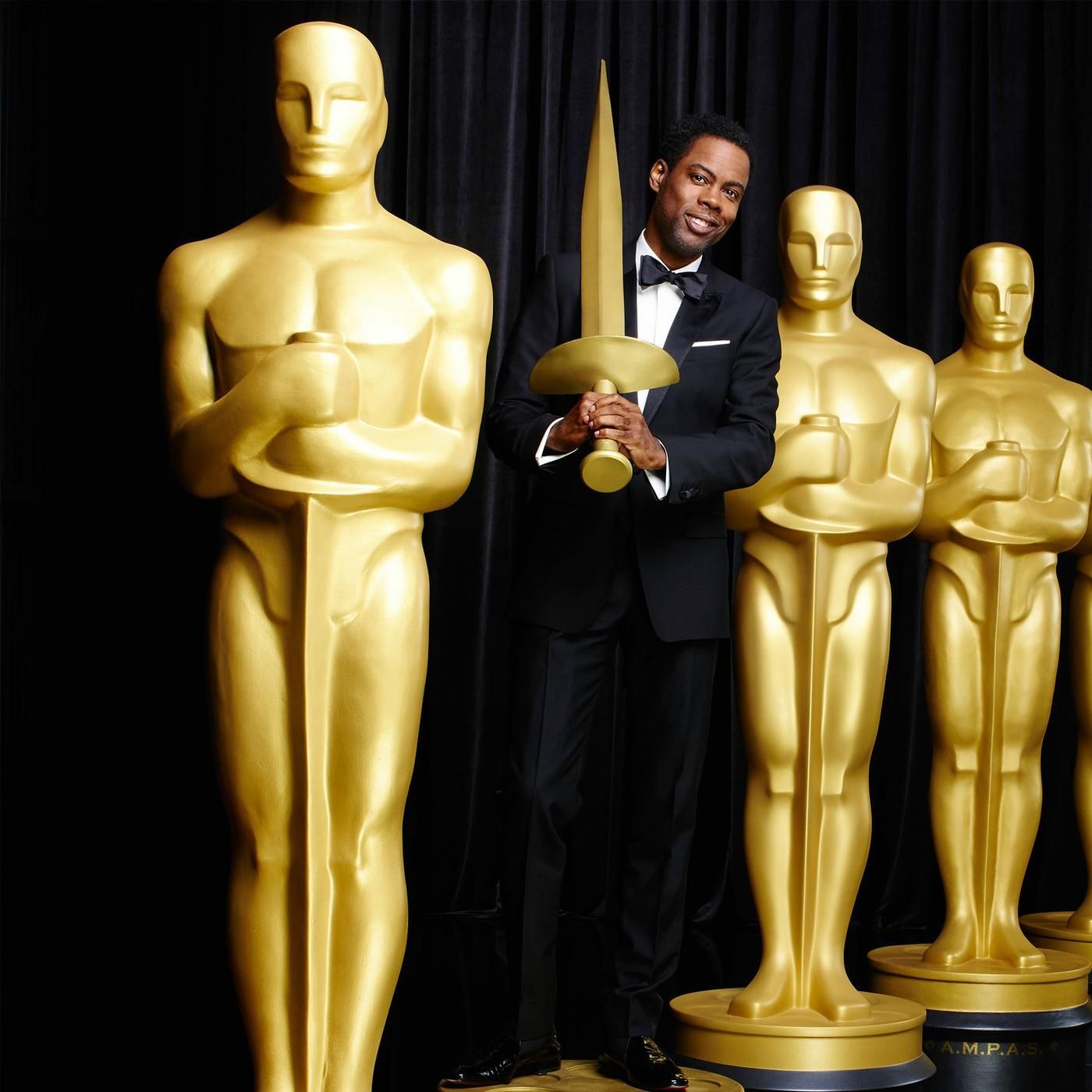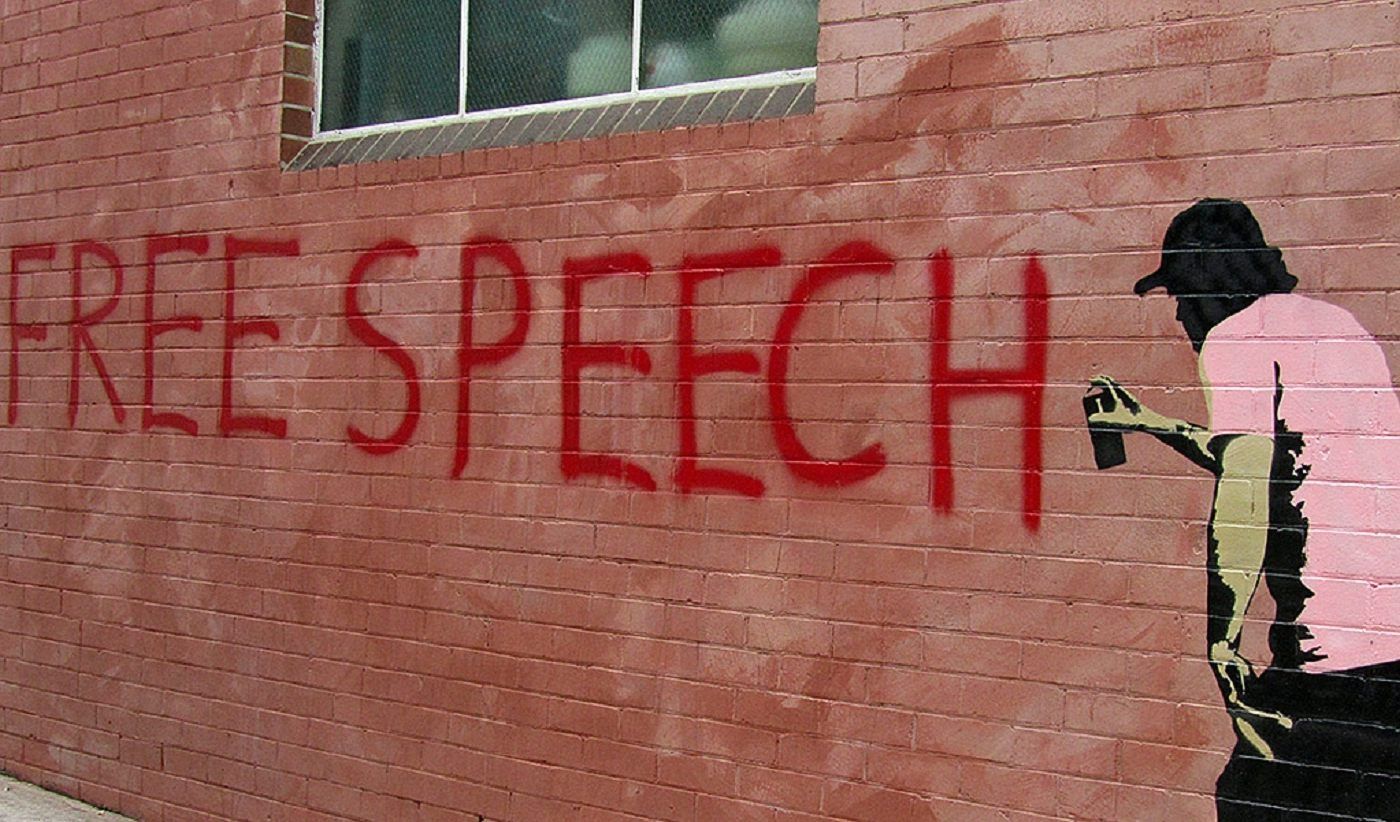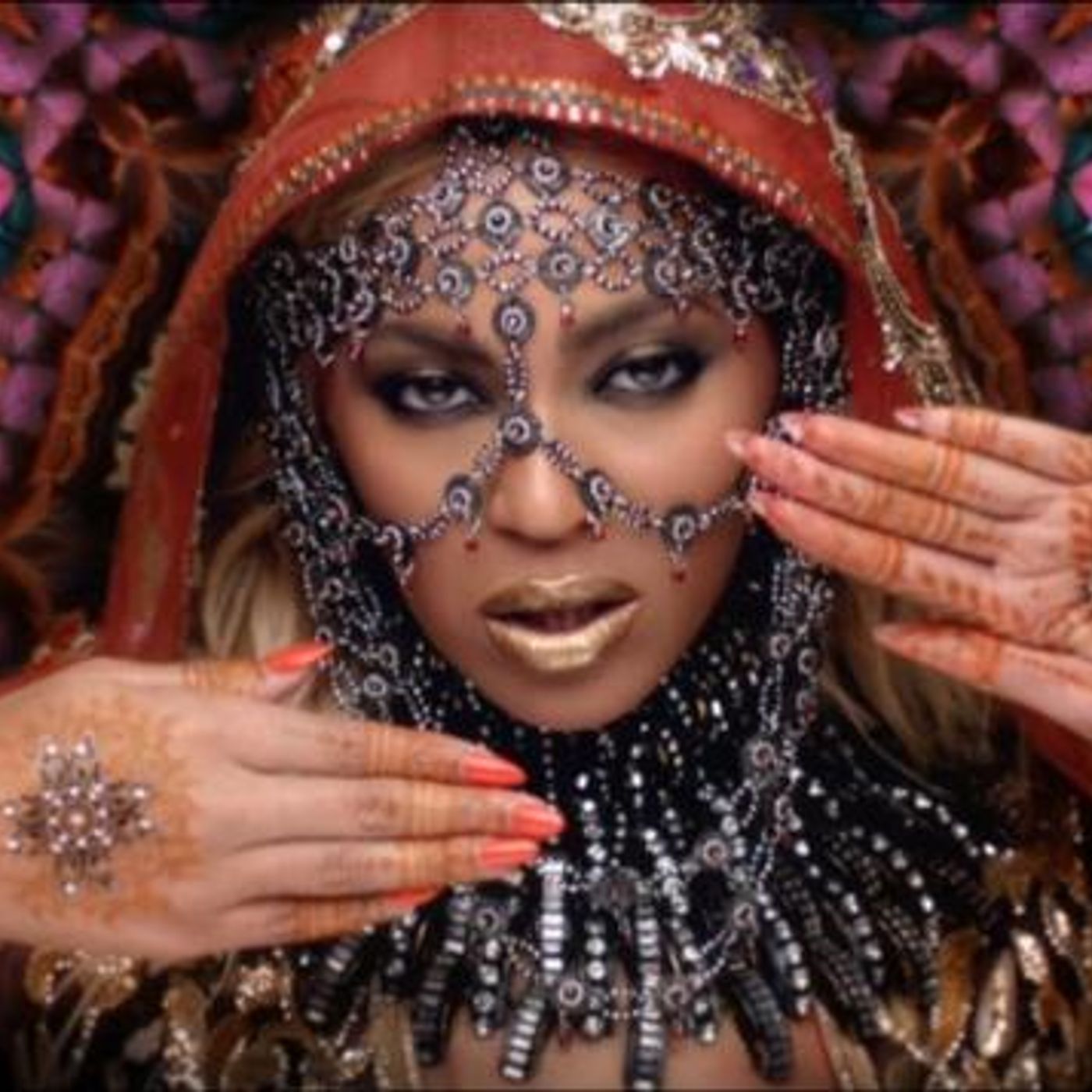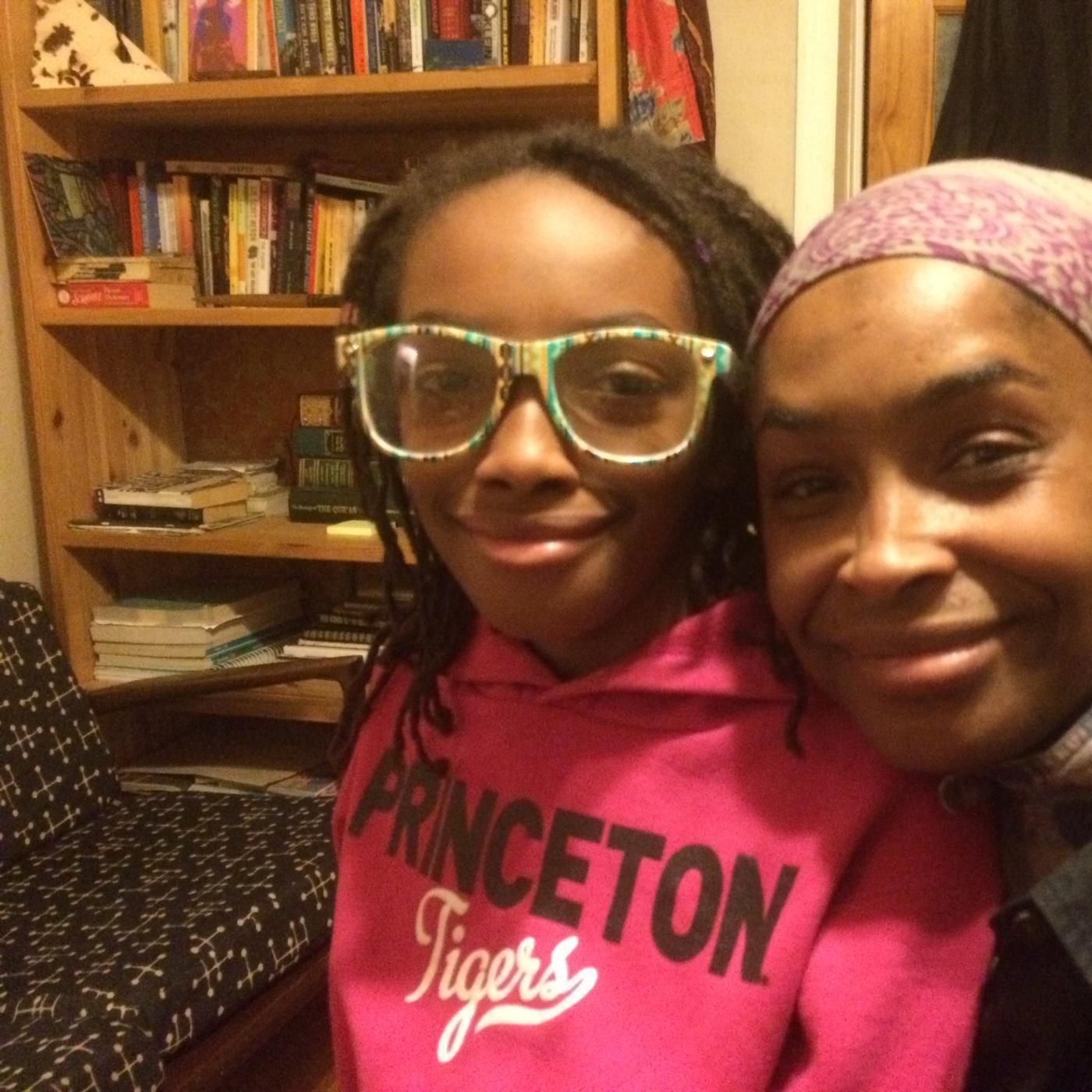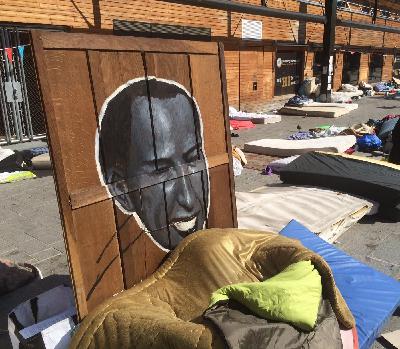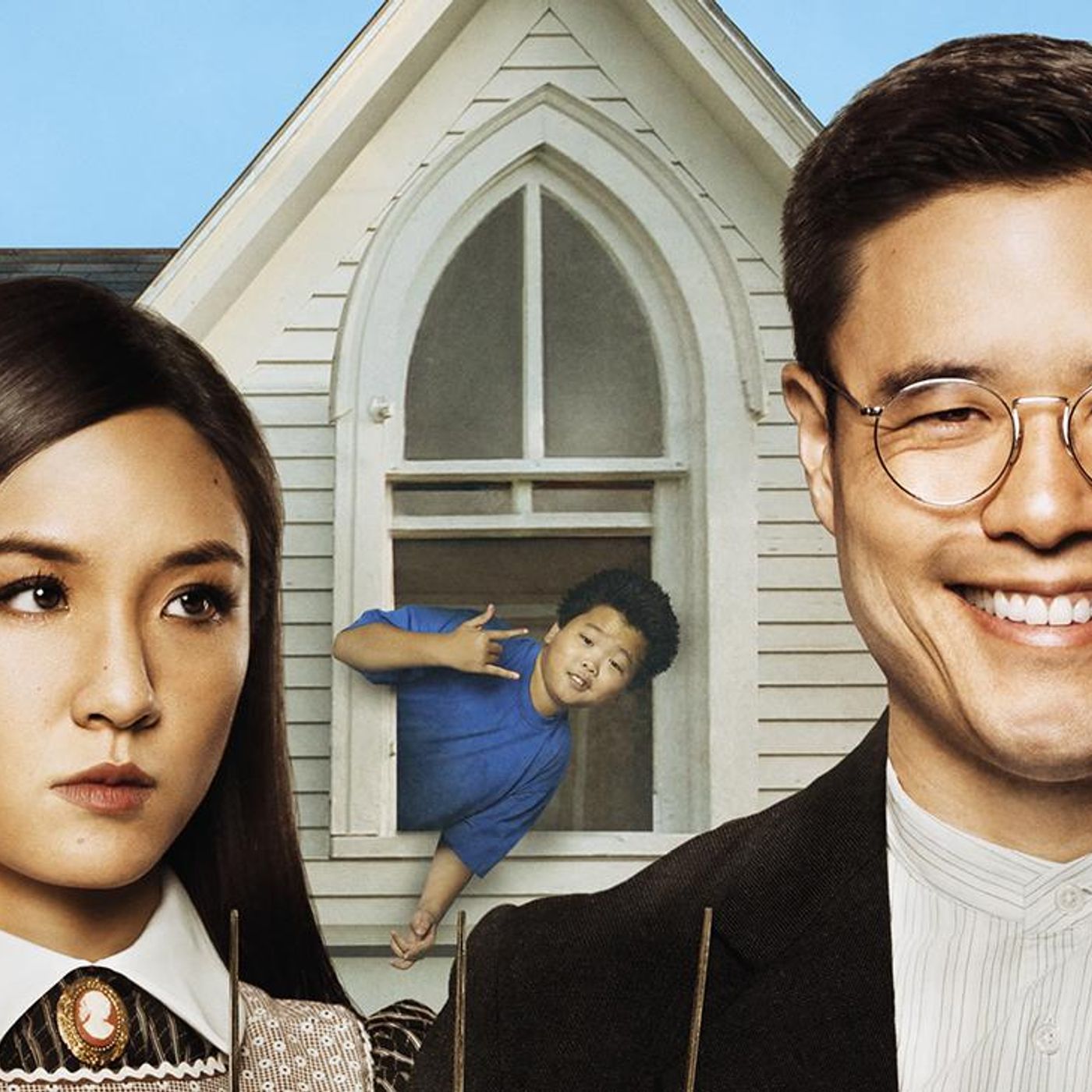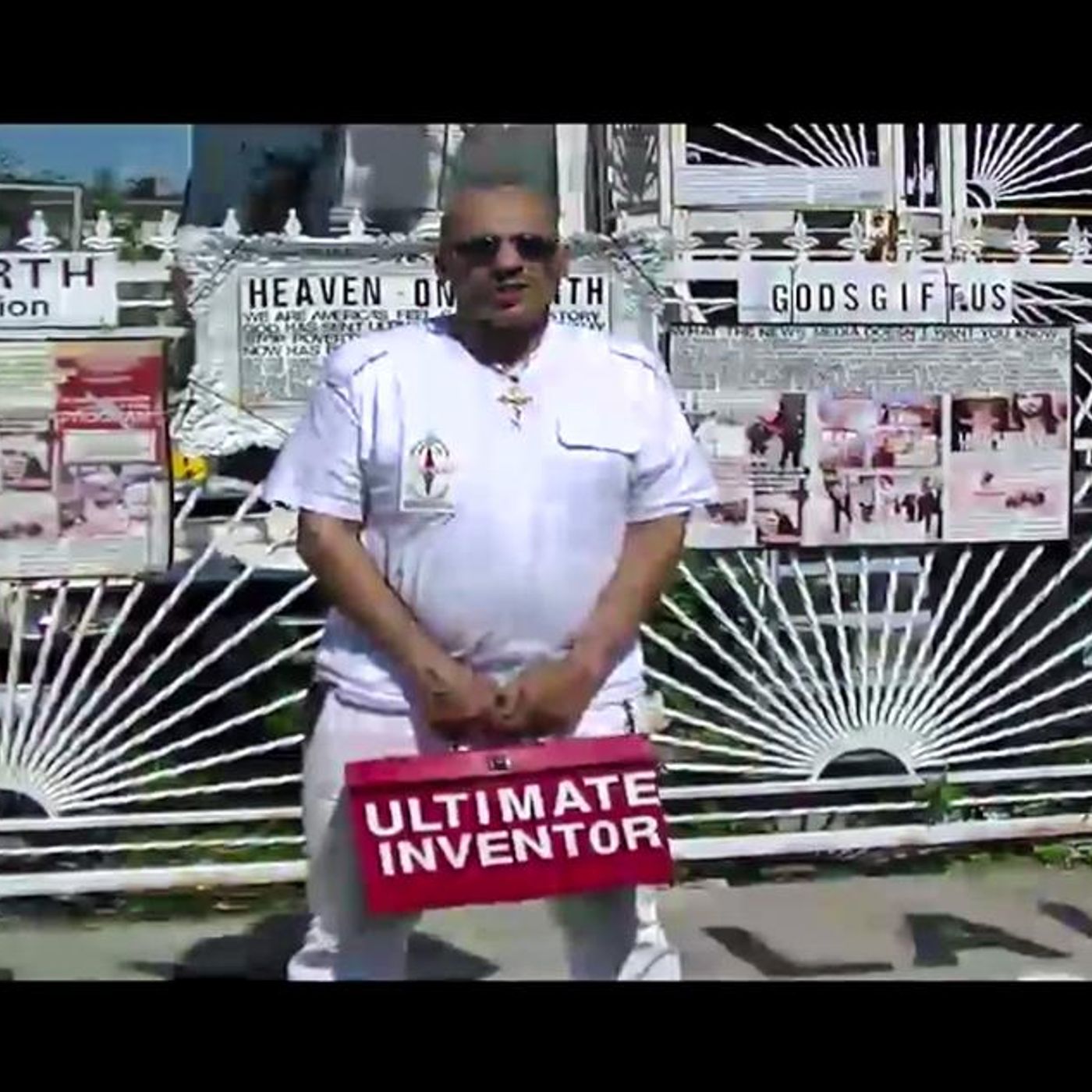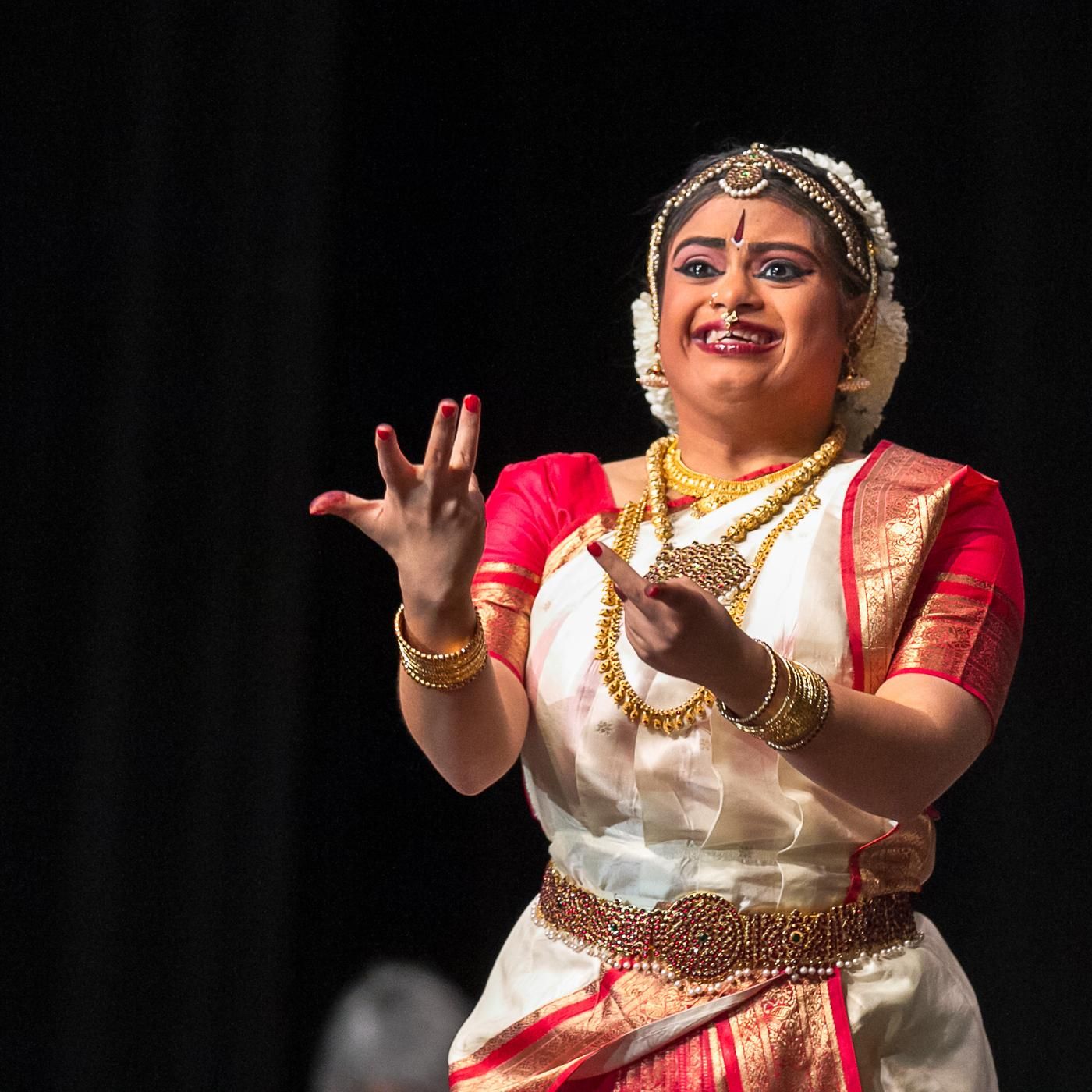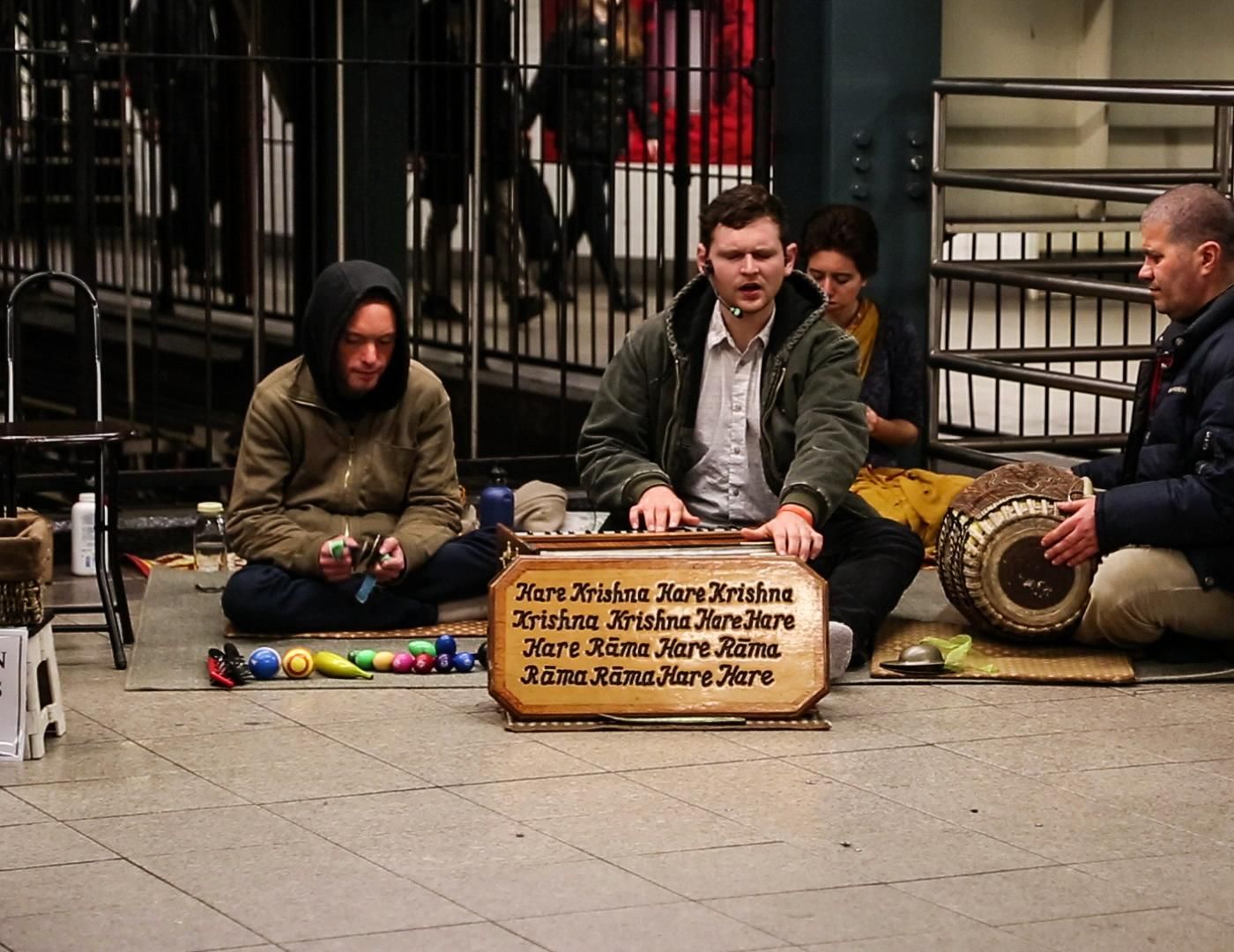Discover Micropolis
Micropolis

16 Episodes
Reverse
Beyoncé. Kendrick Lamar. J Cole. Janelle Monae.
Pop artists are increasingly speaking out against police violence these days, while amplifying the demands of Black Lives Matter in the process. This is in keeping with the spirit of the 1960s and 1970s, when James Brown, Nina Simone and Marvin Gaye turned issues of segregation and poverty into artistic masterpieces like "What's Goin On?"
"Music may be beautiful but it haunts you because you don’t want there to exist in the world the conditions that produce this sort of music," said Mychal Denzel Smith, author of the new book 'Invisible Man, Got the Whole World Watching.' "So what do we do about it?"
We've created a Spotify playlist of some of our favorite protest songs. Have a suggestion? Let us know in the comments.
As New York's primary approaches, many voters are trying to make sense of the 2016 presidential race. For local artists, some want to do more than just understand, they want to influence the outcome of the election. And the candidate who has probably generated the most attention and reaction? Donald Trump.
Vishavjit Singh, an illustrator and Sikh activist, encourages his followers to send postcards to the Trump Organization. Some of the messages have been predictably snarky, but some are genuinely earnest.
"It has to have a touch of compassion, because that's how you connect," said Singh.
Not everyone countering Trump is quite so well-intended. For the modest fee of five dollars, one artist dressed as Donald Trump will let you punch him. For 300 bucks, you can urinate on him.
Nicholas Mirzoeff, a professor at NYU and author of "How to See the World," said Trump is "a character, and he never breaks character."
As there is a a sort of performance to his candidacy, Mirzoeff says this makes Trump a particularly tough challenge for artists to respond to. Rather than going after Trump, Mirzoeff suggests artists would do better countering the divisiveness and anger in the country by bringing people together to engage in discussions, and even, to have fun again.
Should the U.S. ban Muslims from entering the country? Is radical Islam bent on taking over America?
Ten or fifteen years ago, questions like these were largely relegated to the political fringes. Now, they help define the campaigns of the two leading Republican candidates, Donald Trump and Ted Cruz, who are competing in the New York primary on April 19.
The candidates are voicing ideas that come from a deliberate and well-funded campaign to convince the country that even regular, law-abiding Muslims represent a threat to national security.
The campaign kicked into high gear in 2010 in New York, with the opposition to Park51, also known as the 'ground zero mosque.' While some protesters saw the project as an affront to the memory of those who died on 9/11, others took it a step further, arguing that it was a 'victory mosque' meant to celebrate the attacks.
Despite the considerable misinformation spread about the project and the people behind it, the controversy helped ignite a wave of opposition to mosques across America: in places like Sheboygan, Wisconsin, Temecula, California and Murfreesboro, Tennessee. At the same time, state legislators started passing laws to ban Sharia law (usually couched as a ban on foreign law), often in states with relatively few Muslims.
One of the principal players in this movement is Frank Gaffney, a former official in the Reagan administration who runs the Center for Security Policy, in Washington. He's now a foreign policy advisor for Ted Cruz. Gaffney's security think tank funded the website run by Pam Geller, a leader of the opposition to the ground zero mosque. He also helped stoke right-wing suspicions that President Obama is Muslim, has accused a variety of both liberal and conservative public figures of doing the bidding of the Muslim Brotherhood, and that mainstream Muslim-American organizations are actually fronts for foreign jihadi networks.
The theory of 'civilizational' or 'stealth jihad' argues "that Muslims are going to immigrate to the United States and gain access to various levers of control, especially in Washington," said Nathan Lean, author of The Islamophobia Industry: How the Right Manufactures Fear of Muslims. "And will ultimately engage in the grand destruction of the United States and the usurpation of the Constitution."
This theory flies in the face of the research: the conservative Manhattan Institute has documented that Muslim immigrants in America are extremely well-assimilated.
But Gaffney and others within the Islamophobia network, as critics have dubbed it, have seen their influence grow, and penetrate into the mainstream. While he was still running for president, Ben Carson repeated a central claim of the network, that Islam encourages believers to lie in order to achieve their goals.
The network is well-funded: according to the Center for American Progress, it draws upon tens of millions of dollars in foundation funds. The Council on American-Islamic Relations (a frequent target of anti-Muslim activists) has estimated that between 2008 and 2013, private donations brought the figure closer to $200 million.
Sometimes the attention has backfired. Last year, after the deadly Charlie Hebdo attacks in Paris, Steven Emerson of the Investigative Project on Terrorism went on Fox News and claimed that Europe was filled with 'no-go zones,' each of which function as a "country within a country" and is allegedly off-limits to the police. The claim was made repeatedly on the network before an international backlash prompted Fox News to issue a retraction and apologize.
"American Islam bashers talk about the alleged no-go zones in Europe as 'our future,'" said Mark Potok, a Senior Fellow at the Southern Poverty Law Center and a leading expert on extremism and hate. "And, in fact, a number of them have even made the claim that there are no-go zones in Dearborn, Michigan, which is, of course, the largest concentration of Muslims in the United States."
Even though it's "utterly false," Potok said, the rhetoric comes against a backdrop of actual terrorism, in Brussels, San Bernardino, Istanbul and other cities. He worries about the effect Cruz and Trump are having at a precarious moment.
"The fact is, there are millions and millions of people who are frightened. And this kind of talk frightens them more. And frightened people often do very dangerous, and bad things."
On the surface, the #OscarsSoWhite campaign and the current boycott of the awards show Sunday night by Jada Pinkett Smith, Will Smith and Spike Lee are about one thing: recognition.
After all, actors of color want to feel acknowledged for their work, along with directors, screenwriters and everyone else.
But the rancor being felt in Hollywood is about much more than awards. As we explore in this episode of Micropolis, it's also about access, to wealth and power, much of which is concentrated in highly-exclusive (and white) circles.
"The ability to shape the media landscape is an enormous amount of power," said Frances Negrón-Muntaner, Columbia University professor and author of 'The Latino Disconnect: Latinos in the Age of Media Mergers.'
"And groups of people don't tend to give up their power, just like that."
Among the many striking aspects of the 2016 presidential race is this: 'political correctness' is regularly touted as one of our greatest societal evils.
But it's not just Republican candidates: 68 percent of all Americans think 'P.C.' is a big problem, according to this Fairleigh Dickinson University poll.
The question is, why?
In this episode [click "Listen" above], we explore how the policing of language can cause anxiety for many of us, while also forcing us to think about race and gender and other issues.
Additionally, we turned to people who think about words for a living—writers—and put this question to them: Does "political correctness" shape today's art and expression? And if so, is that a problem or a necessity?
Below are just a few of their responses. Feel free to weigh in!
1) Mohsin Hamid, author of How to Get Filthy Rich in Rising Asia and frequent contributor to the NYT Book Review.
“I think power shapes language: what we can say, what we choose to say. And of course power shapes art. ‘Political correctness’ is just a description for certain ways in which some aspects of power are affecting language. There are many other ways. Think of what happened to Jeremiah Wright, President Obama's former preacher, when he violated the norms of ‘patriotic correctness’ in his sermons that were posted online. A firestorm. There are also issues of ‘religious correctness’ that one faces in, for example, Pakistan, where I live. The list goes on and on. And no artist is unaffected by them.”
2) Branden Jacobs-Jenkins, playwright, An Octoroon and Appropriate, says:
3) Teju Cole, pictured below, author of Open City and photography critic at The New York Times Magazine.
“I must have missed when political correctness enslaved human beings, killed them with infected blankets, exiled them from their homes, prevented them from voting, sexually assaulted them, and destroyed their neighborhoods with malign economic policy and bad policing. We have a number of very serious problems — ongoing issues or the aftermath of historical issues — to think about; political correctness is not one of those serious problems. I personally love political correctness because a vehement opposition to it is a pretty reliable way of flagging those who want to be jerks about other people's pain without having to pay any social price for being so.”
Teju Cole
(Martin Lengemann)
4) Young Jean Lee, filmmaker and playwright (Straight White Men), says
5) Julia Alvarez, author of How the Garcia Girls Lost Their Accents and A Wedding in Haiti.
“The writers I most respect are inclusive and diverse and their works include and even humanize politically-incorrect characters. (Just think of Flannery O'Connor's!) These writers do not legislate or promote a certain point of view, but they increase our level of awareness about the world we live in. I love the Chekhov quote that the task of the artist is not to solve the problem but to state it correctly. A character might be racist or a situation in a story unpalatable, even offensive, but if these work in the service of the story/poem, then an artist should not censor herself with other considerations. But writer has to have a certain level of awareness, even if her characters and the situations they are in do not. We, as readers, have to feel that those deeper issues are being addressed and a more capacious vision being sought.”
6) Manil Suri, author of The City of Devi and The Death of Vishnu.
“Political correctness is such an obvious and juicy target when artists allow themselves to fall victim to it that I feel it should be one's moral duty to go after it with the sharpest implement available. I'm sure I succumb to it myself on occasion (being Third World and gay and a person of color, etc) but can only hope someone shows enough mercy to puncture the 'art' that results.”
What do you think? Listen to my question and then click on "Reply" and tell me. We may use your comment for a future story
With their new video for "Hymn for the Weekend," shot in India, Beyoncé and Coldplay stumbled into a controversy that's been centuries in the making: the cultural appropriation debate.
When is it okay to borrow from another culture, and when does the simple act of, say, wearing a kimono or Indian tribal clothing become offensive, a sort of identity theft?
"Our clothes are our external representation to the world," said Susan Scafidi, author of "Who Owns Culture?" "So when you wear the clothes of another culture, you're representing yourself as part of that culture."
Beyond all the usual demands of child rearing, Muslim parents in America have their own set of problems. They're more likely to worry about their kids being bullied or called names.
In the wake of the Paris attacks, people around the world have tried to make sense of extremist violence. We spoke to a Muslim family in Brooklyn about the discussions they've been having at home. And we hear from experts who closely study youth radicalization.
"The issue exists in our country," said Humera Khan, who teaches Muslim youth how to avoid being recruited by terrorists online. "Now the question is, how scared should we be?'
The Obama administration announced that the U.S. would take in 85,000 refugees next year, including 10,000 Syrians. That's up from 70,000 this year, but still far short of what the nation's taken in during previous refugee crises. In 1980, for instance, the nation accepted nearly a quarter-million refugees, many of them from Southeast Asia.
Sudanese refugee Ahmad Adam-Ali (L) on reaching America: "For me it means everything in this life." Seen here at an Indian restaurant in Paris with fellow refugee Abdallah Abdulmunim and WNYC reporter Arun Venugopal
(Arun Venugopal)
“If this is the biggest refugee crisis since the second World War why are we taking so few refugees?” asked Mark Hetfield, the president of HIAS. His organization has been resettling refugees since the 1880s, and has called for accepting 100,000 refugees from Syria alone. "It's clearly in our capacity to do so."
Conservative lawmakers, however, argue that increasing the numbers would allow a 'jihadist pipeline' into the United States.
Despite this resistance, there are those who continue to think of America as a land of fantastic possibility and promise. WNYC's Arun Venugopal talked to one such refugee.
This story was made possible with support from the French-American Foundation.
For many tennis fans, the story of Serena Williams begins in 2001 at the Indian Wells Masters tournament.
While 19-year-old Serena was on the court, facing off against Kim Clijsters, her sister Venus and father Richard Williams entered the stadium — to boos.
Venus had pulled out of a match against Serena earlier, due to tendinitis, but a rumor floating around held that Richard had forced her to withdraw, in order to orchestrate a win for Serena.
"I've never seen anything like it," remarked one of the TV commentators.
In a rebuke to the crowd, Richard raised his fist: the Black Power salute. He later said he heard people shouting the N-word, and issuing physical threats. Serena was the local girl, having been raised in nearby Compton, but the crowd overwhelmingly backed the Belgian Clijsters.
Indian Wells has been haunted by the controversy ever since — as has the sport. After all, tennis is supposed to be civilized, the sport of kings. It's also defined by its overwhelming whiteness — among both players and fans.
If Serena Williams wins the US Open this weekend, she will have bagged her 22nd major title and completed the first Grand Slam since Steffi Graf achieved the feat in 1988. But her cultural significance extends far beyond that, especially to the African American fans who have followed her career.
Imani Perry, a scholar of African American studies at Princeton, recalls that as a 7-year-old, she was the only black child among 300 attending a tennis camp in Evanston, Ill.
"Other campers wouldn't speak to me or sit with me," said Perry.
When she took the court, her opponents simply sat down on the other side of the net and refused to play. This was in 1980. She never picked up a racket after that.
But she has always loved watching the Williams sisters on TV. She turns off the sound, though, "because there's so much animosity," she said. Commentators complained about how "noisy" the Williams' sisters' hair was, or "that their father wasn't equipped to coach them. There was so much constant criticism."
She said that black women in particular feel that "it's this unbelievable resilience that they've displayed."
Kavitha Davidson, a sports columnist at Bloomberg View, said Serena contends regularly with racism and sexism, or 'misogynoir' as coined by scholar Moya Bailey. That explains why there is a long list of tweets comparing Serena to a gorilla, and why she earns $10 million less in annual endorsements than Maria Sharapova, despite a far better record. For her most ardent fans, those who think she's the best player ever, this is an inexcusable double standard.
But is she the best ever? For some long-time observers, that's an open question.
Los Angeles Times sports columnist Bill Dwyre said it's hard to definitively rank Williams above previous greats like Steffi Graf, Martina Navratilova or Margaret Court, all of whom have held the 'best ever' title at various points.
"The eras are different. The time is different, the equipment is different, the balls fly faster, the crowds are different, the marketing and branding that they do is much different," said Dwyre.
But her success stands out. And it's because of the timing.
"So much is frankly devastating and depressing at this moment about race in this country," said Professor Perry. "She allows people just to feel pride and joy in a way that's unfiltered and unmediated."
ABC's "Fresh Off the Boat," based on Eddie Huang's memoir of the same name, premiered last week on a wave of hype. This is the first Asian-American sitcom since Margaret Cho's "All American Girl." What took so long?
In this episode of Micropolis, we consider the long, fraught history of Asians in TV (not including the excellent "Goodness Gracious Me," below), and why ethnic sitcoms are generally problematic.
But as NYU's Charlton McIlwain argues, we could be at a turning point. The Big 3 networks are now scrambling to make up for lost audiences, and are essentially telling minorities: "Tell me what you want, and we'll do our best to give it to you, because we need you really much more than you need us."
When he was 17 years old, Kedar Powell's dad handed him a jar filled with $25 in change and kicked him out of the house.
"'This is what you want to do? Bye,'" Kedar recalls his dad saying. "And that's how life started for me."
Kedar is gay. His father is Muslim. His mother had already rejected him — she is a devout Christian who had divorced his father years earlier. But he found redeeming moments in his religious upbringing in Brooklyn.
"I was always in the church, in the choir. I loved to sing. Singing is my passion," he said.
But as he came of age, he realized he was "different." His mother tried to set him straight at church, but eventually turned him out, sending him to live with his father — but things were even worse there. And after his father sent him away, he became another gay homeless youth on the streets of New York.
"I slept in abandoned buildings. I slept in the train," he said. "I used to break into abandoned buildings and sleep on the floor."
For more than five years, he survived by performing sex work, occasionally escaping life-threatening situations. He said God guided him out of those episodes.
Jennie Livingston, director of "Paris is Burning," the classic documentary which explored the underground world of voguing and ballroom, said LGBT youth are disproportionately homeless.
"Who do they get thrown out by? Generally the religious parents. And it's ironic, it's sick, it's really unfortunate. I don't know how those parents define what love is, or what the inner principles of those religions are," she said.
As many others have, Kedar found community through the voguing scene, but at 27, he feels he's too old to regularly participate. But he hasn't aged out of God. Even though he now has a stable home in Queens, he still visits an outreach program for LGBT youth run by the Church of St. Luke in the Fields. He's stopped going to church, though. He said he's tired of people trying to make him straight.
Instead, he expresses his spirituality through dance.
"It's very important for us to perform. That's how we get our energy. Our life. Everything," he said.
America has a long history of religious hucksterism — people who have used God to sell everything from widgets to wars. But in a cynical city like New York, Micropolis wonders if that tactic can possibly work.
“Hector the Inventor" says he has escaped death three times due to divine intervention. He is convinced God will help make him rich while also eliminating world poverty.
"I’m not afraid of God, and I know what I’m doing," says Hector. "Because I’m guided."
Hema Ramaswamy, a resident of Middletown, New Jersey has Down syndrome, but that didn’t stop her from rigorously studying Indian classical dance and mythology for years, and giving a grueling solo performance before hundreds of friends and family members.
This loving portrait of Hema affirms the power of religious and cultural communities, and the ability of art to shape a young woman’s identity.
Backstage before her arangetram, Hema receives encouragement from friends.
(Preston Merchant/Preston Merchant Photography)
Hema studied in preparation for four-and-a-half years.
(Preston Merchant/Preston Merchant Photography)
Hema is flanked by her sisters Uma Shankar and Geetha Radhakrishnan as she thanks the audience after her arangetram performance.
(Preston Merchant/Preston Merchant Photography)
For those in the business of Muslim P.R., 2014 has been a pretty rough year.
In the wake of ISIS beheadings and movements like Boko Haram, Americans increasingly believe that Islam encourages violence more than other religions. This, despite research from the conservative Manhattan Institute that Muslims in America are actually highly assimilated.
But in recent months, Muslims have taken to social media — with a campaign called "Not in My Name." It's an earnest attempt by Western Muslims to distance themselves from extremists, with hashtags and YouTube videos.
That was followed by a counter-hashtag, the much snarkier #MuslimApologies.
Sorry for making the first hospital in the world, the first university, algebra, and medicine. #MuslimApologies
— Hatim Alzoubi (@h_dawg35) October 24, 2014
I'm sorry your addiction to caffeine was instigated by an Arab inventing coffee. #MuslimApologies http://t.co/cE8ImY4WxF
— A Crafty Arab (@acraftyarab) October 8, 2014
I am sorry or re-introducing #Greek #philosophy to the #west and for inventing the toilet and for #coffee and #cigarette #MuslimApologies
— kahraman haliscelik (@turkishreporter) October 6, 2014
I'm so sorry for coffee, cheques, parachutes, chemistry, soap... #muslimapologies v @mehdirhasan @abdullahoguk http://t.co/6ju9qaiTSH
— Abdullah (@abdullahoguk) October 5, 2014
One of the "apologists," executive director of the Arab-American Association of New York Linda Sarsour, said she thinks "Not in My Name" is pointless, because it won't sway ISIS or the Westerners who already hate Muslims.
"Sometimes I tell my people, 'Is it worth it that you go out there and say this or write these statements? Why do you feel so defensive? Why do you feel like you have to defend yourself? You're a good American. You're leading a congregation. You're talking about social justice. You're a law-abiding citizens. Why do you always feel compelled to have to apologize for every damn Muslim out there that does something crazy or does something violent?" Sarsour said.
But communications expert Robert Perez, who worked on a successful campaign to convince the Presbyterian Church to ordain gays and lesbians as clergy, said that earnestness actually works.
People respond to what he calls "Journey Stories," Perez said. "You show the conflict, you show the concern, you even show the fear and those stories proved to be very powerful."
Those types of stories encourage empathy, Perez said, and it's empathy, not irony, that changes minds.
A version of this story originally ran in On the Media.
The “War on Christmas” has become a perennial rallying cry on Fox News and conservative talk radio. But in multicultural New York City, even non-Christians who don’t celebrate Christmas get a kick out of the holiday spirit.
Micropolis talks to The Daily Show's Aasif Mandvi, New York Times columnist Andrew Ross Sorkin and artist Swati Khurana on why, contrary to staging a war on Christmas, they are engaging with it in their own way. Arun also discovers that in the Orthodox Jewish enclaves of Brooklyn, some people don’t even know it's Christmastime.
Nihal Kajjam remembers the precise moment when he encountered the Hare Krishnas in New York. He was wearing jeans and a black Megadeth t-shirt and was walking near the statue of Gandhi, in Union Square.
And then he heard a small group of people dressed in saris and traditional robes, chanting — and it captivated him.
Kajjam grew up in a religious, Krishna-worshipping family in India, but had since personally "dwindled." He ate meat, grew a little too cocky about his jumpshot, fell hard for a girl who broke his heart. Watching the Hare Krishnas chanting, though, inspired him, and earlier this year he left his NYU dorm and moved into the Hare Krishna ashram in Bedford-Stuyvesant. He's become a vegetarian and he's celibate.
The Hare Krishnas, he said, have given him a sense of purpose and a community.
"If you give up the senses for the right reason, you get a higher taste. And that higher taste is tasty, bro. It’s really good. It’s awesome! Now I have meaning to my life," Kajjam said.
Kajjam is just one of those drawn to the new Hare Krishnas, who are making a comeback in New York. The International Society for Krishna Consciousness was founded in the East Village in 1965 by A.C. Bhaktivedanta Swami Prabhupada, known as Prabhupad. Prabhupad became one of the central figures of the counterculture, and for a while, the Hare Krishna chant was everywhere — on the streets, in pop music, and on TV.
But then the religious group seemed to vanish.
Steven Gelberg, who joined the Hare Krishnas in 1970 and left in the 80s, said that the Krishnas had become aggressive — and dishonest. He recalled a Krishna technique he dubbed The Changeup: First, a Krishna would give someone a book. Then (seemingly on second-thought), he or she would ask for a small donation, and convince the mark to hand over a $20 with the promise of change. But then the Krishna would never give the change back.
"And so they put people in the position that they had to be almost rude and say, 'No, give me more money back. I'm gonna give you $5, I want $15 back.' So it became a very manipulative thing, and that really pervaded the organization," Gelberg said.
Various Hare Krishna scandals followed, and people left the fold or moved away. Some of the especially devout, like Abhiram, born John Sims, moved to India and chanted there.
Then Occupy Wall Street happened in 2011. Some Krishnas led the Occupiers in chanting and it sparked a rebirth.
"We decided we should bring the Hare Krishna mantra back to the streets of NYC. Just as Occupy Wall Street have gone to the streets," said Abhiram, who now presides over the Bed-Stuy ashram. "No social change ever in history comes from the intellectuals, comes from the leadership, comes from the vested interests. Ever. Never. It always comes from the bottom. It always comes from the street. And so we're taking it to the streets."
With the Hare Krishna revival came a new business plan. Instead of conning strangers out of their cash, the Krishnas make organic, gluten-free, vegan, dark chocolate chip oatmeal raisin cookies. They're being sold for $3.50 each at The Bean chain and other fine coffeeshops.
Freshly-baked cookies receiving Krishna's blessings
(Hare Krishnas)
For Kajjam, the sense of belonging he's found with his fellow Krishnas has been invaluable.
"All these guys, I feel like taking their legs and putting them on my head," he said. "Because if it wasn’t for their mercy, I’d be so lost."


